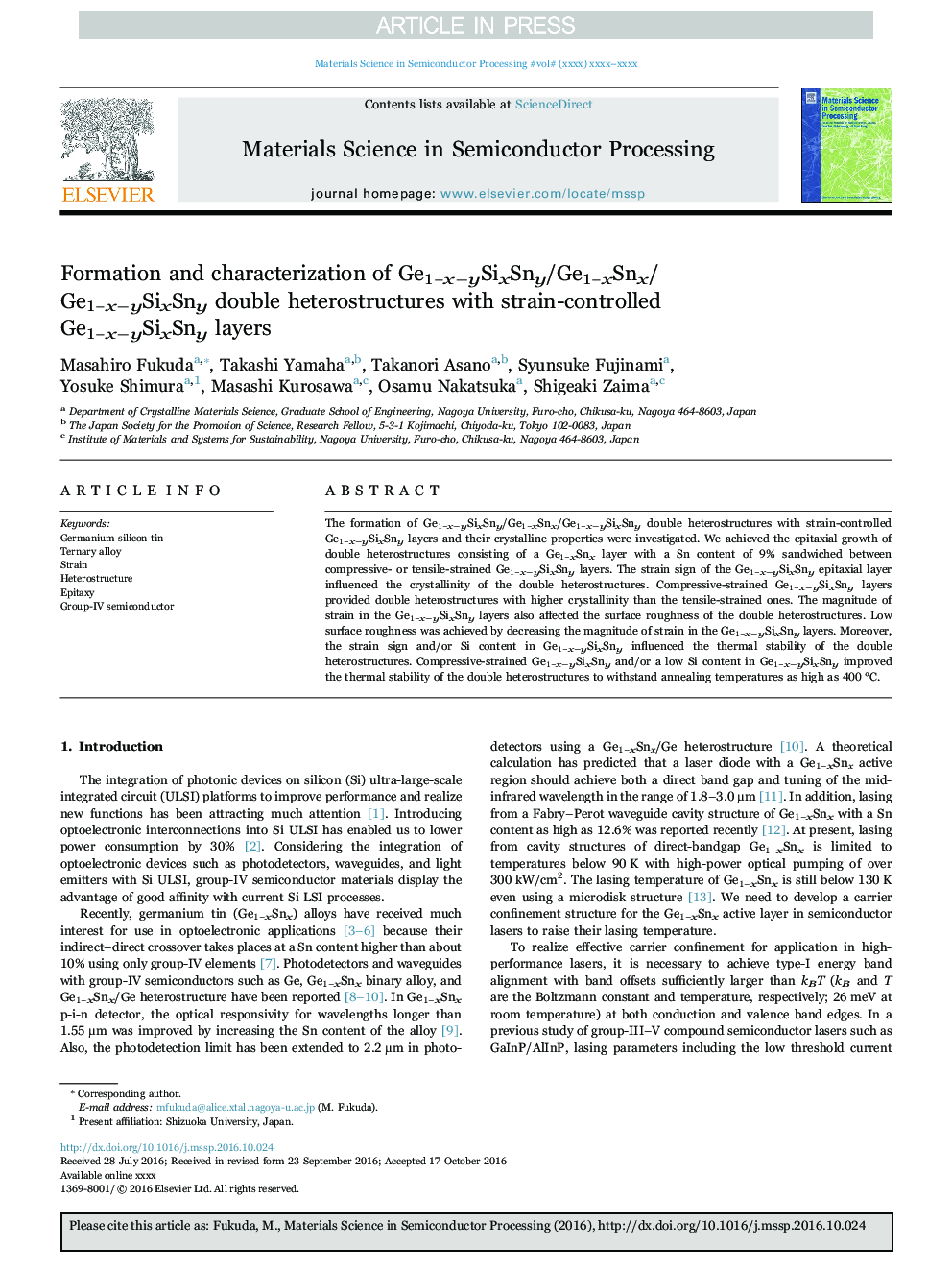| Article ID | Journal | Published Year | Pages | File Type |
|---|---|---|---|---|
| 5005896 | Materials Science in Semiconductor Processing | 2017 | 6 Pages |
Abstract
The formation of Ge1âxâySixSny/Ge1âxSnx/Ge1âxâySixSny double heterostructures with strain-controlled Ge1âxâySixSny layers and their crystalline properties were investigated. We achieved the epitaxial growth of double heterostructures consisting of a Ge1âxSnx layer with a Sn content of 9% sandwiched between compressive- or tensile-strained Ge1âxâySixSny layers. The strain sign of the Ge1âxâySixSny epitaxial layer influenced the crystallinity of the double heterostructures. Compressive-strained Ge1âxâySixSny layers provided double heterostructures with higher crystallinity than the tensile-strained ones. The magnitude of strain in the Ge1âxâySixSny layers also affected the surface roughness of the double heterostructures. Low surface roughness was achieved by decreasing the magnitude of strain in the Ge1âxâySixSny layers. Moreover, the strain sign and/or Si content in Ge1âxâySixSny influenced the thermal stability of the double heterostructures. Compressive-strained Ge1âxâySixSny and/or a low Si content in Ge1âxâySixSny improved the thermal stability of the double heterostructures to withstand annealing temperatures as high as 400 °C.
Related Topics
Physical Sciences and Engineering
Engineering
Electrical and Electronic Engineering
Authors
Masahiro Fukuda, Takashi Yamaha, Takanori Asano, Syunsuke Fujinami, Yosuke Shimura, Masashi Kurosawa, Osamu Nakatsuka, Shigeaki Zaima,
